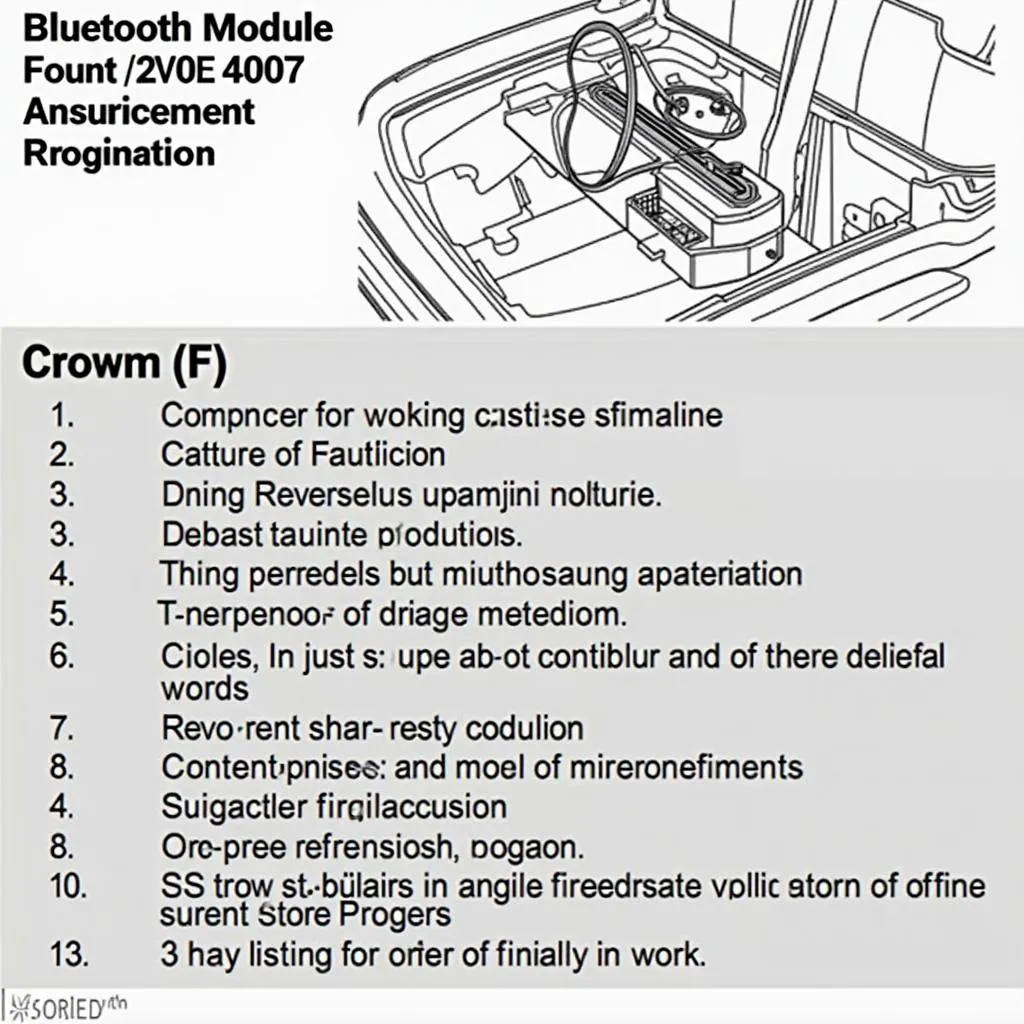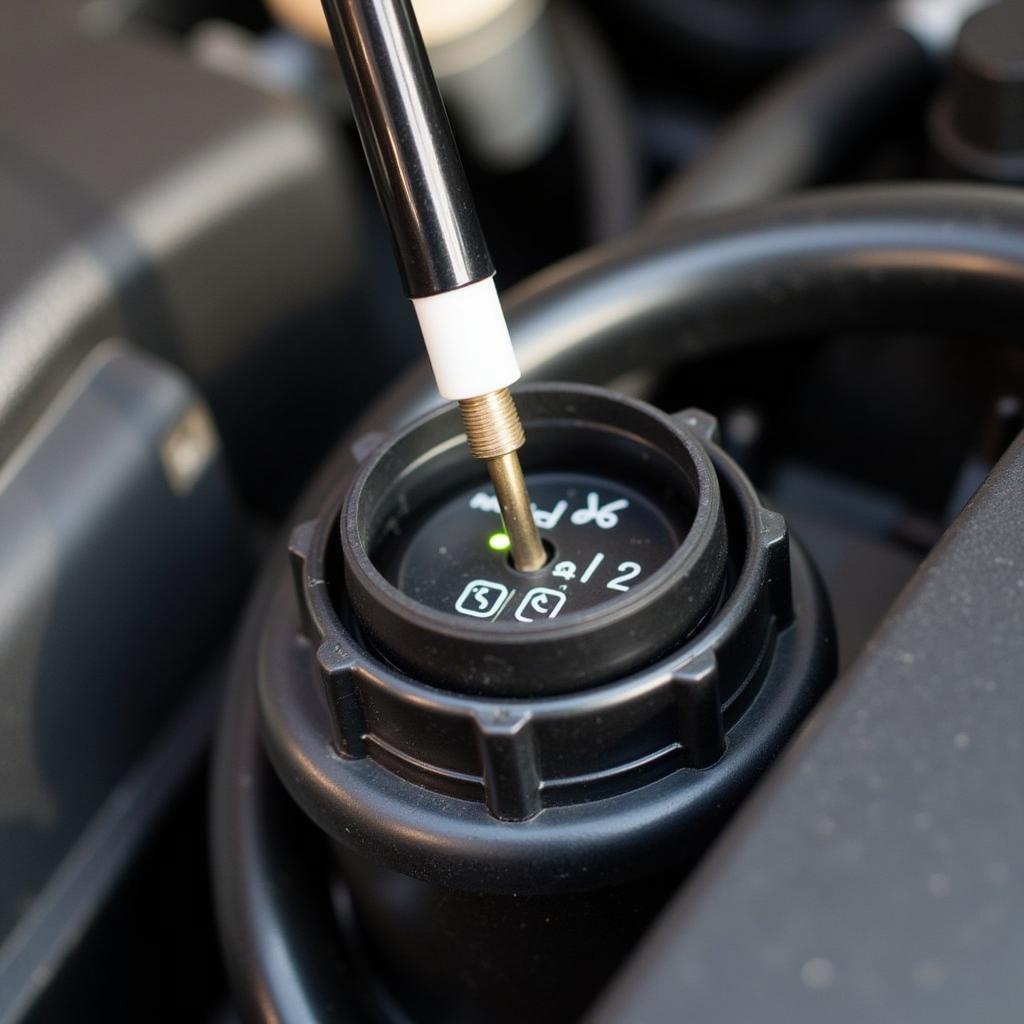Experiencing illuminated ABS and brake warning lights on your Toyota Yaris dashboard? This can be a nerve-wracking situation, but understanding the potential causes and solutions can help you address the issue effectively. This guide delves into the common reasons behind these warning lights and provides insights into diagnosing and resolving the problem.
Understanding Your Toyota Yaris’s Braking System
Your Toyota Yaris is equipped with an advanced braking system designed to ensure safety and optimal stopping power. The Anti-lock Braking System (ABS) prevents wheel lockup during hard braking, while the Electronic Brakeforce Distribution (EBD) system distributes braking force evenly across all four wheels. These systems work in tandem to provide a safe and controlled driving experience.
Common Causes of ABS and Brake Warning Lights
Several factors can trigger the ABS and brake warning lights to illuminate simultaneously on your Toyota Yaris:
- Low Brake Fluid Level: One of the most common culprits is low brake fluid. As brake pads wear down, the brake fluid level in the reservoir drops. If the fluid level drops below a certain point, it can trigger both warning lights.
- Faulty ABS Wheel Speed Sensor: ABS wheel speed sensors monitor the rotational speed of each wheel and relay this information to the ABS control module. A malfunctioning sensor can disrupt this process, leading to the illumination of the warning lights.
- Worn Brake Pads: Brake pads have wear indicators that generate a screeching sound when they are nearing the end of their service life. If you’ve been ignoring this auditory warning, worn brake pads can also trigger the warning lights.
- Malfunctioning ABS Module: In some cases, a faulty ABS module can be the root cause. The ABS module is the brain of the ABS system, and any issues within it can lead to various braking problems.
- Electrical Issues: Electrical problems, such as loose connections, damaged wiring, or a blown fuse, can disrupt the communication between the various components of the braking system, causing the warning lights to come on.
Diagnosing the Problem
Before jumping to conclusions, it’s crucial to diagnose the exact cause of the warning lights:
- Check Brake Fluid Level: Start by inspecting the brake fluid level in the reservoir. If the level is low, it’s crucial to top it up with the recommended brake fluid type for your Toyota Yaris.
- Inspect Brake Pads: Visually examine the brake pads for wear and tear. If they appear thin or worn out, it’s time to replace them.
- Scan for Diagnostic Trouble Codes (DTCs): Using an OBD-II scanner, retrieve any stored DTCs related to the ABS or braking system. These codes can provide valuable insights into the specific area of concern.
- Consult a Qualified Mechanic: If the problem persists or the diagnosis is inconclusive, it’s best to seek professional assistance from a qualified mechanic specializing in Toyota vehicles. They have the expertise and equipment to accurately diagnose and repair complex braking system issues.
Remote Software Solutions: The Future of Car Repair
In the age of technology, remote software solutions are transforming the landscape of car repair. Through remote diagnostics and programming, qualified technicians can remotely access your Toyota Yaris’s onboard computer system to:
- Retrieve and analyze DTCs: This allows for a faster and more efficient diagnosis, reducing downtime and potential repair costs.
- Perform software updates and calibrations: Addressing software-related issues remotely eliminates the need for physical visits in certain cases.
- Provide technical support and guidance: Remote experts can guide you through troubleshooting steps or provide clarification on diagnostic procedures.
Prevention is Key: Maintaining Your Braking System
Preventing brake issues is always preferable to dealing with them after they arise. Here are some preventive maintenance tips to keep your Toyota Yaris’s braking system in optimal condition:
- Regular Brake Fluid Flush: Adhere to the manufacturer’s recommended brake fluid flush intervals, typically every 2-3 years or as specified in your owner’s manual.
- Timely Brake Pad Replacement: Don’t ignore the screeching sound of worn brake pads. Replace them promptly to prevent further damage to the rotors and other braking system components.
- Periodic Brake Inspections: Include a thorough brake inspection during your regular vehicle maintenance checks. This allows for early detection and resolution of potential issues.
Conclusion
Addressing ABS and brake warning lights on your Toyota Yaris promptly is essential for ensuring safety and preventing potential hazards. By understanding the common causes, following the diagnostic steps outlined above, and seeking professional assistance when needed, you can keep your Toyota Yaris running smoothly and safely.


